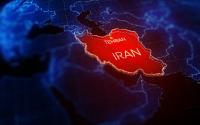Common Dreams / Published on Friday, April 15, 2005 by the Guardian (UK)Isabel Hilton
The student demonstrators set off from Haidian, the university quarter of Beijing. They chanted anti-Japanese slogans and handed out leaflets to the crowd. Onlookers were moved to join them, and when the demonstration turned violent, the students were treated as nationalist heroes.
The year was 1919, the occasion the discovery that, under a secret agreement with the signatories of the Treaty of Versailles, the former German concessions in China would not revert to Beijing but be handed to Japan. Last weekend, students set off again from Haidian shouting anti-Japanese slogans. The demonstration ended with a violent attack on the Japanese embassy. Anti-Japanese resentment spilled over the next day into the southern cities of Guangzhou and Shenzhen, and in Shanghai two Japanese students were beaten up. The rising tensions of east Asia have spilled on to the streets.
There is a direct historical line between the students of 1919 and those of last weekend. In 1919, China was weak and humiliated, Japan an ascendant power that would soon invade and brutally occupy much of China. After Japan's defeat in 1945 there was no apology for the appalling slaughter of civilians in Nanjing, the germ warfare experiments or the sexual crimes against Chinese women. Japanese textbooks have continued to give a partial and one-sided account, but China - no saint when it comes to historical accuracy - did not protest. Under Mao, the history of the relationship was papered over in a show of friendship.
If the resentment is now back on the streets, it is because China's rise is shifting the geopolitical tectonic plates, offering a direct challenge to Japan's economic dominance of east Asia and to the strategic dominance the US has enjoyed, with its major ally Japan, since 1945. In the East China Sea, China and Japan have been facing each other off over fossil fuel reserves in 14,000 square miles of disputed waters. China has been drilling for gas in an area that Japan claims, and this week Japan announced to Chinese protests that it would license oil and gas drilling in the same waters.
Then there is the military dimension: the rapid modernisation of China's armed forces means that the long-standing judgment that China could not mount a successful invasion of Taiwan is no longer a reliable guide to the future. The US is bound by treaty to defend Taiwan and could once rely on the moral support of the region. But as the US loses influence, Japan is increasingly exposed as its most reliable military ally- one that the US is encouraging to develop a more robust military profile.
In the longer game of influence, China is gaining ground. While the Bush administration has been preoccupied with Iraq, China has been steadily expanding its clout in Asia. In Australia, South Korea and Thailand it is the dominant economic and strategic partner, and is securing its own trading relationships by building networks in which it will be central - the Boao Forum, for instance, is the Chinese answer to Davos but the invitees are overwhelmingly Asian. Beijing is the moving spirit behind the first east Asian summit, scheduled for Kuala Lumpur later this year. The US is not included. It is an influence that China will certainly use in the future. The proposition, for instance, that Japan be given a permanent seat on the UN security council has been greeted with thinly disguised scorn by China.
But there is a paradox in this jostling for position. If China, Japan and the US are competing for predominance, it is also true that each is dependent on the others to a degree unprecedented in history. Last year, Japan overtook the US as China's biggest trade partner. China needs the huge volumes of machinery and technology that are imported from Japan to feed industrial expansion. Japan needs the high levels of trade with China to keep its economy out of recession. China needs the US markets to feed its export-led boom, and the US is dependent on Beijing continuing to buy and hold Washington's mounting foreign debt. Major conflict would be serious for all three.
Why then, did China ratchet up the tension with last weekend's government-sponsored demonstration in Beijing? One answer lies in China's achilles heel - its internal weakness. Nationalism is the last shred of Maoist ideology for a ruling party that has abandoned its socialist roots. Since the party allows no political challenge, nationalism is also the only safe political outlet for new generations. To divert the political frustration of young Chinese on to Japan may seem like a safety valve for a ruling group nervous of the growing political frustrations of its population.
But it is a dangerous strategy, as subsequent events demonstrated. Rage lies just below the surface in China - a rage that breaks out in daily unreported incidents as disaffected citizens forcibly complain about their lot. The example of one government-sanctioned demonstration inspires others to try their luck. Before you know it, other resentments have exploded and the cities are restless. China can shut off the diplomatic provocation to Japan at will. Far more difficult is to shut off popular discontent.






